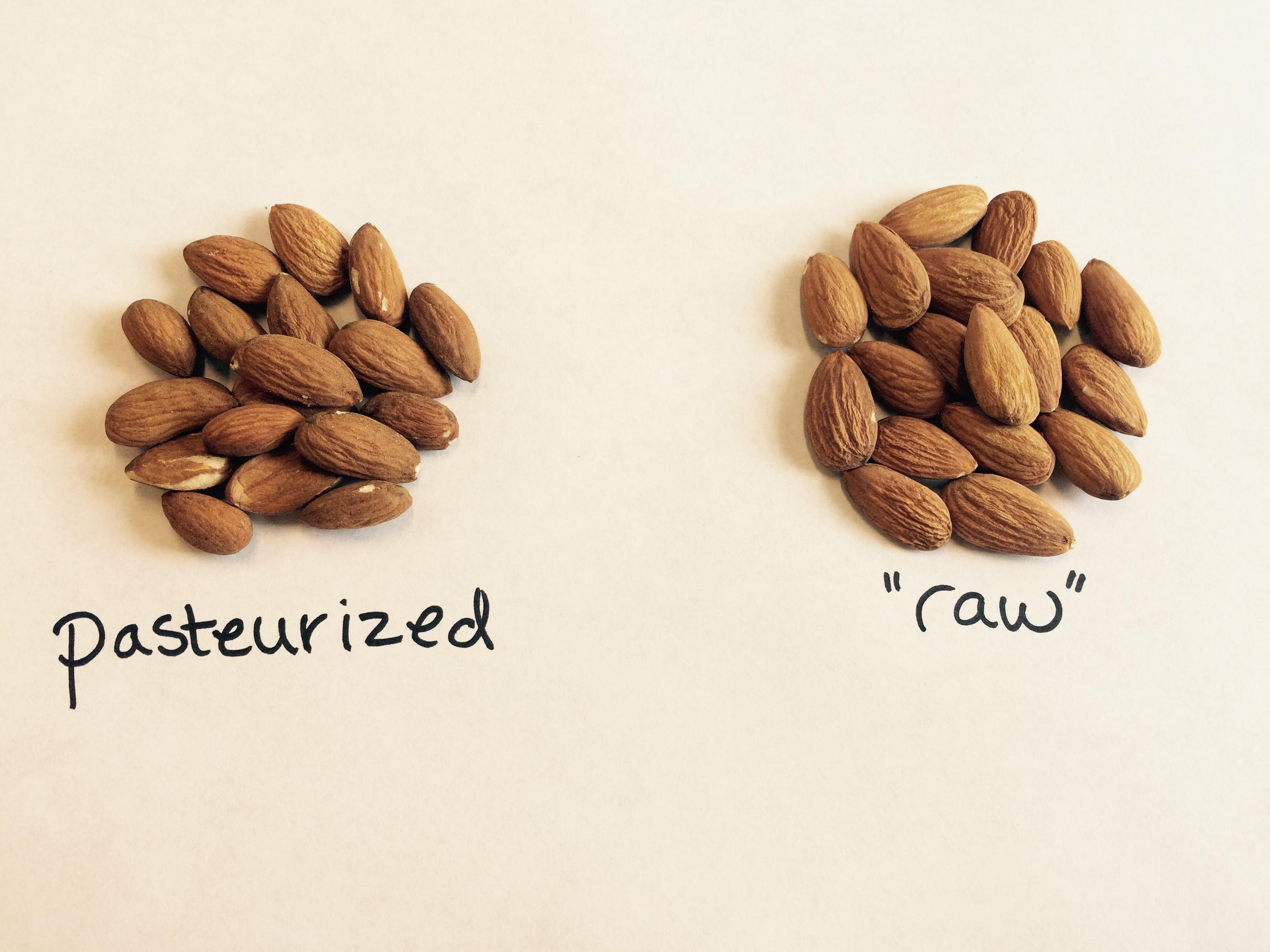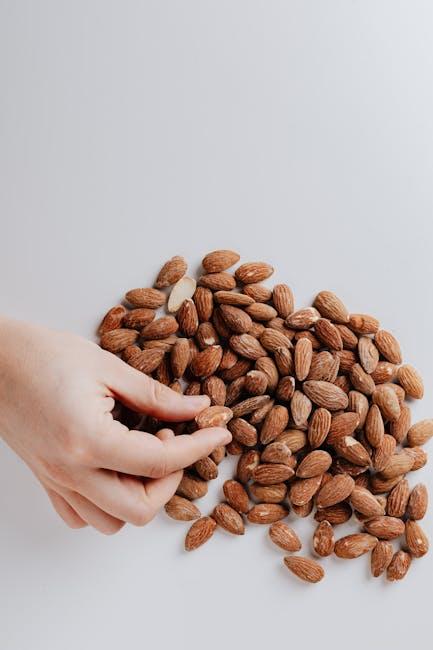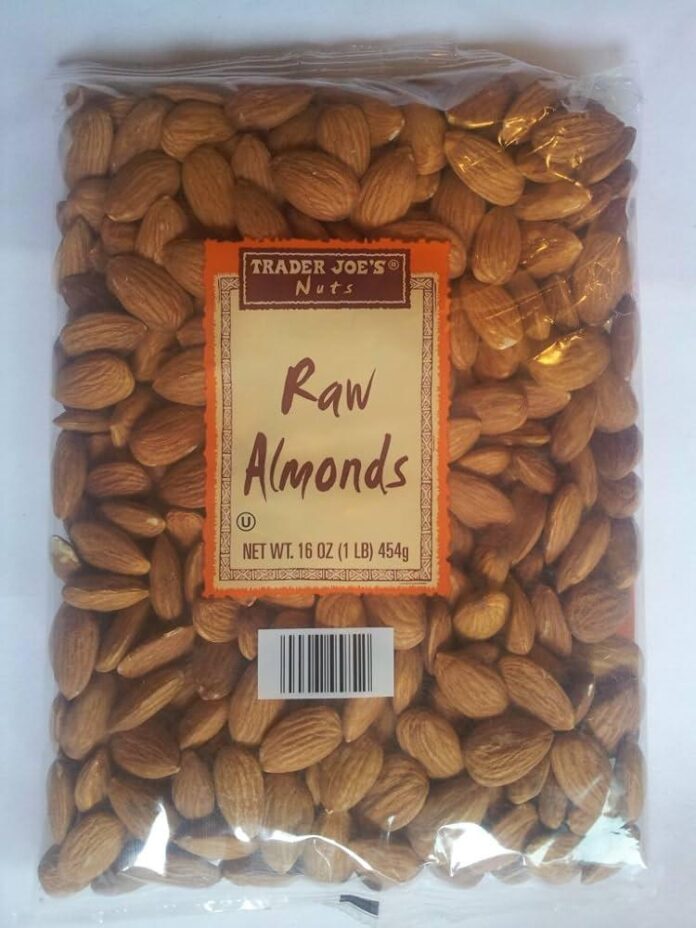When it comes to snacking,almonds have long held a cherished place in our hearts and on our plates. Whether they’re tossed into a salad,blended into a creamy milk alternative,or simply enjoyed by the handful,these little powerhouses pack a nutritional punch. However,the debate between raw and roasted almonds sparks curiosity among health enthusiasts and culinary aficionados alike. Are the benefits of raw almonds truly as robust as their roasted counterparts? And does the roasting process alter their flavor profile, transforming them from crunchy to crave-worthy? In this article, we’ll delve into the nutritional differences between raw and roasted almonds, exploring their health impacts and unique taste experiences.Join us on a journey to discover the true essence of these beloved nuts and see which version reigns supreme in the world of wellness and flavor.
Exploring Nutritional Benefits of Raw Almonds
raw almonds are a powerhouse of nutrition, providing a multitude of health benefits that make them a favourite among health-conscious individuals. One of their standout features is their rich content of healthy fats, particularly monounsaturated fats, which are known to support heart health by reducing bad cholesterol levels. Beyond fats, raw almonds are also an excellent source of protein, making them an ideal snack for vegetarians and those looking to boost their protein intake without resorting to animal products. They also boast a wealth of vitamins and minerals, such as:
- Vitamin E: A potent antioxidant that helps protect cells from oxidative damage.
- Magnesium: Essential for muscle and nerve function, as well as energy production.
- Folate: Important for DNA synthesis and repair, crucial during periods of rapid growth.
Along with these nutrients, raw almonds contain dietary fiber which aids in digestion and contributes to a feeling of fullness, making them a satisfying option for those looking to manage their weight. Furthermore, they have a low glycemic index, which helps maintain stable blood sugar levels. With their natural state preserved, raw almonds maintain a fresher taste and more pronounced nutty flavor profile compared to their roasted counterparts. They can be enjoyed in various ways,such as:
- In salads for an added crunch.
- Ground into almond flour for gluten-free baking.
- Blended into almond butter for a creamy spread.
| Nutrition Component | Raw Almonds (per 100g) |
|---|---|
| Calories | 579 |
| protein | 21g |
| Healthy fats | 49g |
| Fiber | 12g |
| Vitamin E | 25.6mg |

Understanding the Roasting Process and Its Impact
The transformation of raw almonds into roasted ones is a fascinating journey that considerably alters their chemical makeup, flavor, and texture. during the roasting process,almonds undergo Maillard reaction,a form of non-enzymatic browning that enhances their flavor profile,leading to the progress of rich,nutty,and slightly sweet notes. This process not only deepens the color but also makes the almonds crunchier. Heat treatment in roasting can also effectively reduce anti-nutrients like phytic acid, making the nutrients more bioavailable for absorption in the body. Furthermore, the toasting process can enhance the almond’s aroma, making them irresistible snacks.
Though, while roasting adds desirable flavors and reduces certain anti-nutrients, it also leads to a slight reduction in some vitamins, particularly those sensitive to heat, such as vitamin E. The oil content in almonds can also lead to rancidity if not stored correctly after roasting. Here’s a speedy comparison of the nutritional content in raw versus roasted almonds:
| Nutrient | Raw almonds (per 100g) | Roasted Almonds (per 100g) |
|---|---|---|
| calories | 579 | 614 |
| Protein | 21g | 20g |
| Fat | 49g | 53g |
| Vitamin E | 25.6mg | 22mg |
| Fiber | 12.5g | 11.5g |
Delving deeper into the sensory experience, raw almonds are frequently enough described as crunchy with a subtle, delicate flavor that can be overshadowed by the overwhelming notes of roasted varieties. Both versions hold their unique appeal, catering to different tastes and nutritional goals. While some prefer the bold, rich taste of roasted almonds, others gravitate towards the mild essence of raw almonds, each bringing its own set of benefits to the table.

comparative Taste Profiles: Raw vs Roasted Almonds
When exploring the taste profiles of raw and roasted almonds, one quickly discovers a delightful contrast that reflects the nuances of each preparation. Raw almonds deliver a clean,creamy flavor characterized by their natural sweetness and slight nuttiness. They have a crunchy texture that is wholesome and refreshing, often described as earthy, making them a preferred choice for those seeking a healthier, unadulterated snack. the subtle notes of raw almonds can be enhanced by pairing them with fruits or other wholesome ingredients, allowing their natural flavors to shine through.
in contrast, roasted almonds undergo a transformation that introduces a richer and more complex flavor profile. The roasting process caramelizes the natural sugars, resulting in a warm, toasted flavor accented by a hint of smokiness.This warming sensation adds a depth that many find appealing, contributing to an overall crunchier texture. Roasted almonds are often seasoned, elevating their taste further with a variety of spices or salts, making them an irresistible snack.When compared side by side, the choice between raw and roasted often boils down to personal preference and the desired culinary request.

Choosing the Right Almonds for Your Health and Taste Preferences
When selecting almonds, both raw and roasted varieties bring unique flavors and health benefits to the table. Raw almonds, known for their natural crunch, offer a pure taste that many health enthusiasts appreciate. They are typically rich in vitamins and minerals, including:
- Vitamin E: an antioxidant that protects cells
- Magnesium: essential for muscle and nerve function
- Fiber: promotes digestive health
Conversely, roasted almonds deliver a deeper, richer flavor that can enhance snacks and dishes, thanks to the Maillard reaction during the roasting process. However, it’s essential to consider that roasting can slightly diminish some of the nutrients. The preparation method can also influence sodium levels; for those who enjoy salted versions, they can become a flavorful treat but may increase your sodium intake.your choice might hinge on how you prioritize taste versus nutritional retention.
| Type | Taste Profile | nutritional Highlights |
|---|---|---|
| raw almonds | Natural, crunchy, slightly sweet | Highest in nutrients |
| Roasted Almonds | Rich, decadent, deeper flavor | Some nutrient loss, potential added salt |
In Summary
In the grand debate of raw versus roasted almonds, both sides present compelling profiles that cater to different preferences and nutritional needs. While raw almonds may win out in terms of retaining natural enzymes and nutrients, roasted almonds bring forth a rich, toasty flavor that elevates culinary creations and snacking experiences alike. Ultimately, the choice between them hinges on your personal palate and nutritional goals.
Whether you’re seeking the pure essence of nature or indulging in a flavorful crunch,each option offers a unique set of qualities to savor. As you delve into your next handful of almonds, consider not just the taste but the journey of flavors and nutrients they bring to your table. Embrace both forms and discover how they can complement each other, creating a delicious balance in your diet. After all, in the world of almonds, there’s room for both the raw and the roasted—each carrying its own distinct story waiting to be enjoyed.






